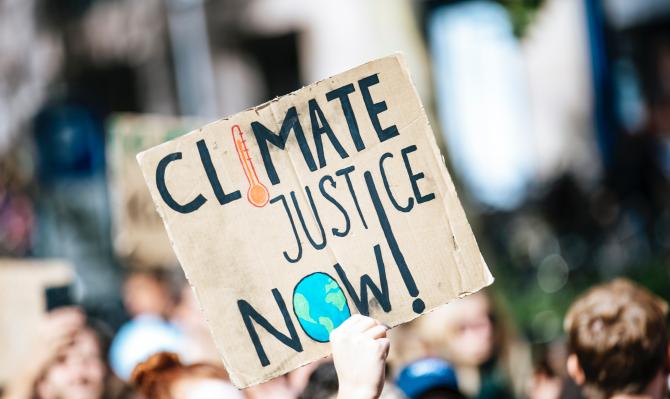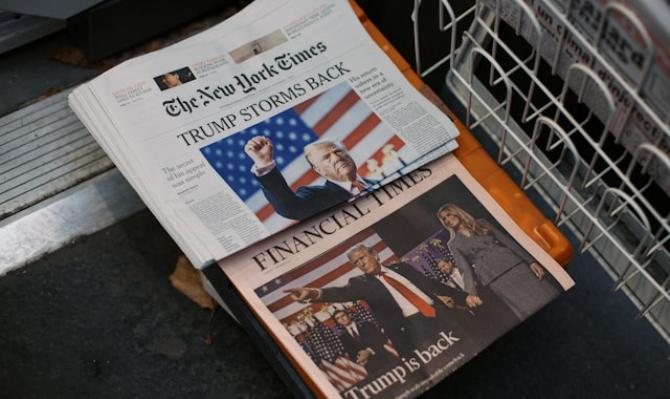2022: return to normality?
The starting point for next year is a global economy that is recovering much of the growth lost during the pandemic, thanks to the success of the vaccines and an extraordinary revival in demand for durable goods that has not been met by supply, creating bottlenecks that have ended up distorting value chains and leading to an unexpected surge in inflation.

For much of the crisis that has been crippling the international economy since the beginning of 2020, we have longed for a return to normality and, with it, a recovery in GDP levels and economic trends to those which were present in the now distant Q4 2019. In doing so, we have overlooked the fact that the economic landscape of two years ago was not exactly idyllic either (risk of secular stagnation) and, above all, that COVID is accelerating structural changes which we all saw coming on the horizon but were unable to assign a date to. So, if the question is when will we recover the «economic normality» lost in the last two years, then the answer is probably never. Soon enough, we will be back to producing the same amount of goods and services as we did at the end of 2019 (China, the US and much of the OECD has already done so), and we will even close the gap with where we should have been in the absence of the pandemic based on the long-term trend (see first chart). However, that gross domestic product will be achieved with a combination of different production factors and with a composition, on both the demand and the supply side, which will also differ from that which existed pre-COVID. These differences can be seen in the shape which the revival in employment is taking in countries like Spain, which, in addition to sound economic policy responses (furlough schemes, etc.), clearly reflects the particular idiosyncrasy of the recovery phase in which we are now immersed.

In this regard, at the end of the crisis there will be winners and losers and we will not return to the exit gate, as the classic process of creative destruction which occurs in any recession is proving even more acute this time. This is the case both due to the particularly disruptive nature of the pandemic and because it is coinciding with the disruption caused by digitalisation and the need to improve the sustainability of our production model. If a crisis occurs when «the old is dying and the new cannot yet be born», then there is no better definition to describe the current moment, which is especially convulsive and complex, given that we are witnessing the biggest mismatch between supply and demand since China joined the global production chain. The peculiar nature of this crisis, as an economic shutdown linked to mobility restrictions rather than a drastic adjustment in financial or real asset prices (balance-sheet recession), has led to an intense recovery in demand after the lockdowns, and this has pushed value chains to their limits while also showing us that, sometimes, sophistication also comes with fragility.
Thus, while the underlying trends that will characterise the post-COVID economy are gradually taking shape (changing consumption patterns, reconsideration of the role of the public sector, new central bank strategies, etc.), economic activity over the next 12 months will continue to depend on: how the pandemic evolves and how it affects mobility, the restoration of supply chain functions and, finally, the adaptation of economic policy to this new phase of the economic cycle. In other words, the dynamics of the recovery will be determined by the rebalancing of global supply and demand, which in turn will depend on how flexible production proves to be in adapting to a demand that will continue to be stimulated by extremely expansive financial conditions as well as by the constraints of the fiscal stimulus plans set in motion on both sides of the Atlantic. Everything rides on the capacity of supply to respond, having been hampered for the past decade both by the absence of reforms to make the economic structure more flexible and by weak public and private investment. If the adjustment occurs in the first half of the year, then the latent macroeconomic imbalances will be absorbed and we will return to a reflation scenario, albeit with the global economy making a soft landing as it converges towards its potential growth rates.
In this baseline scenario, the world economy will continue to show buoyant growth in 2022 (4.5%), albeit some 1.5 pps lower than this year. Much of the slowdown will be explained by the loss of momentum in both the US (3.5% in 2022 vs. 5.4% in 2021) and China (5.7% vs. 8.3%), both of which will already have left the period of recovering the GDP lost during the crisis well behind them and will be gradually approaching their long-term trend levels of growth. In the case of the euro area, the cruising speed will not change much (4.7% vs. 5.1%), both because of the maintenance of the monetary and fiscal stimuli (with NGEU funds) and due to the «rebound effect» which can be expected in countries of the region which performed relatively worse in the latter half of 2021 (Germany and Spain), assuming that industry and tourism recover as expected.
Beyond the potential for new variants of the virus such as Omicron to distort economic activity, the outlook will ultimately be shaped by how inflation behaves, the central banks’ exit strategies and how the financial markets assess the suitability of the financial conditions that are in place at any given time. The biggest risk is that the supply chain problems persist throughout the coming year, or that the disruptions in labour markets such as that of the US become more than a temporary feature. In that case, it is very unlikely that the price rallies in the more volatile components of the consumer price index will remain contained without filtering down to the other components to some extent, given that industrialised countries will be very close to closing the output gap by the end of next year. This would call into question the hypothesis being defended by many monetary authorities, namely that the current inflation rally is of a transitory nature.
With real interest rates at historical lows (see second chart), if we are to avoid threats to financial stability it is essential that the credibility of the central banks is upheld at all times. This will involve keeping a close eye on inflation expectations, and thus avoiding falling behind the curve for too long. However, differences in countries’ cyclical position (the recovery is proving highly asymmetric), as well as in the very credibility of the central banks themselves, are already resulting in very different rates of monetary normalisation between emerging and developed countries. This lack of monetary coordination could end up causing mismatches in exchange rate behaviour, another potential medium-term risk. The key, therefore, remains to keep the financial channel free from potential tensions in order to avoid the problems of the Great Recession of 2009.

In short, the starting point for next year is a global economy that is recovering much of the growth lost during the pandemic, thanks to the success of the vaccines and an extraordinary revival in demand for durable goods that has not been met by supply, creating bottlenecks that have ended up distorting value chains and leading to an unexpected surge in inflation. The economy, like football, is a short blanket. If you prioritise growth at all costs, you will most likely end up with economic imbalances if your supply lacks the capacity and flexibility to respond. So, on the cusp of a new year, we cannot rule out the possibility that the ingredients laid before us will expose us to unexpected emotions: new mutations of the virus, inflation above central bank targets, mismatches between supply and demand, bottlenecks in a production chain that we thought was infallible, rising inequality, accelerated digitalisation, very high levels of debt, etc. In that sense, it does not look like we will be returning to the old normal. And as is well known, exceptional times call for exceptional measures.






